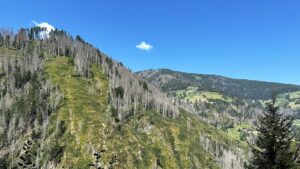Abstract/Description
Mycofiltration is an environment-friendly technology which involves the treatment of contaminated water by passing it through a network of fungal mycelium. This technology has gained momentum over the years, and this systematic review aimed to collate literature on mycofiltration. Literature on water sources subjected to mycofiltration, types of saprophytic fungi employed, contaminants removed by mycofiltration, and contaminant removal efficiencies (R%) was reviewed. Articles, reports and theses were collected from selected academic databases, organisational websites, social and research networking sources, and the Google Scholar search engine. Article screening based on a pre-defined inclusion criteria was conducted in two sequential stages i.e., title and abstract, and full-text. Studies meeting the inclusion criteria were critically appraised. Meta data was extracted from studies of high and medium validity, and a narrative synthesis was done. Twenty-nine articles representing 136 studies (n) passed appraisal. A range of water sources were mycofiltered, and of the total studies, synthetic stormwater (21%) and real wastewater (21%) were the most frequently mycofiltered. Fungi of the Pleurotus genus were predominantly used in creating mycofilters. A range of organic, inorganic and microbial contaminants were removed by mycofiltration. Organic and microbial contaminants were the most studied (n = 40 and n = 47 respectively). Organic contaminants included pharmaceuticals, pesticides, dyes and humic acids with R% ranging between 60-100%. Regarding microbial contaminants, E. coli was the most studied contaminant, and R% of 30%, 60% and 90% were reported. Other microbial contaminants removed were a consortium of bacteria namely S. enteritidis, S. aureus, K. pneumoniae, E. faecium, P. aeruginosa and C. jejun, with a R% ranging between 20-70%. Inorganic contaminants investigated were metals. Zinc and iron which were investigated across all studies, were efficiently removed, with zinc demonstrating a higher R% of more than 90%, while iron ranged between 60-100%. For the other metals (lead, copper, cadmium, nickel, manganese, aluminium, cobalt, silver, and arsenic), removal efficiencies were generally in the extremes, i.e., R% was either high (>90%) or low (<10%). Overally, the review found that contaminant removal by mycofiltration varies, but the technology remains a promising cost effective and environment-friendly tool.


